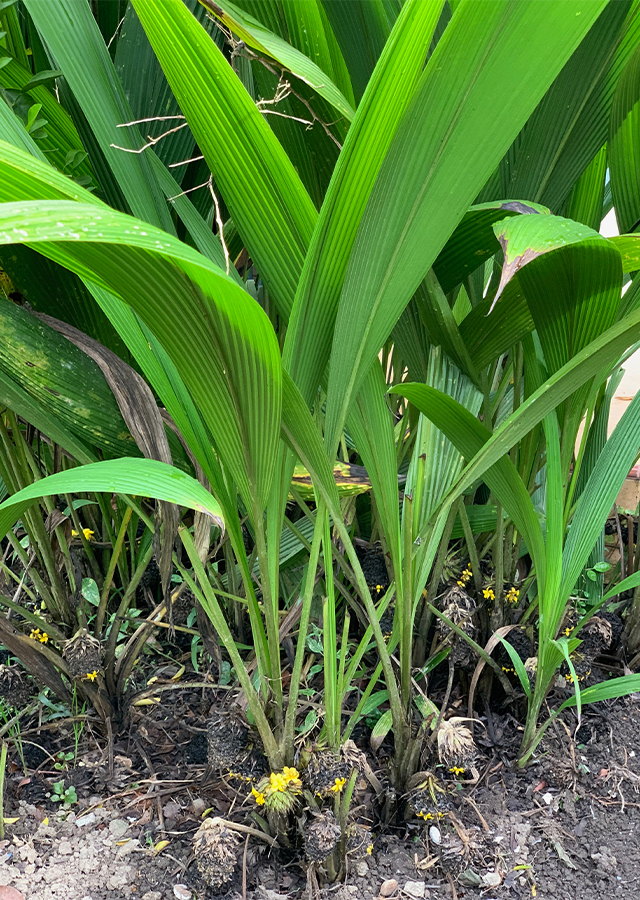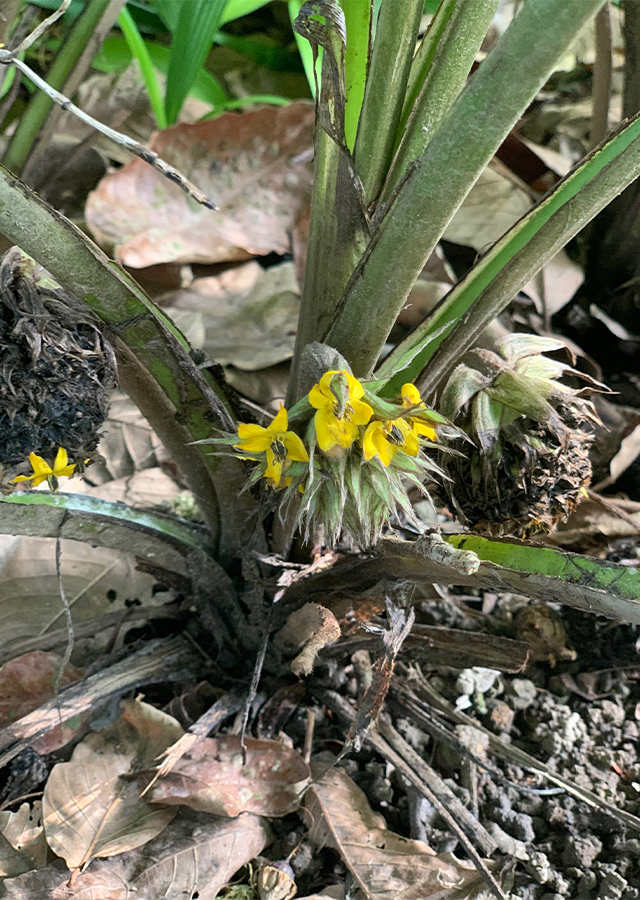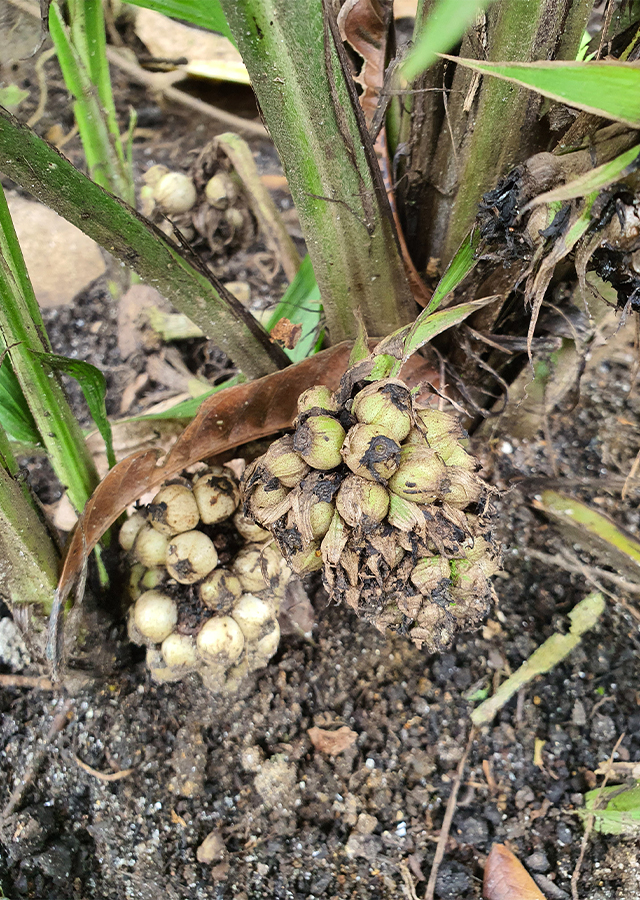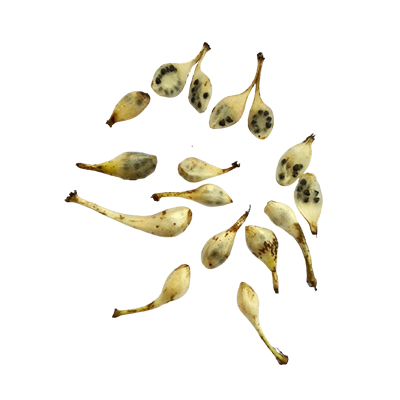Weevil-wort
Curculigo latifolia Dryand. ex W.T. Aiton
Hypoxidaceae
Location in our garden
Principal



Synonym
Aurota latifolia (Dryand. ex W.T.Aiton) Raf.
Molineria latifolia (Dryand. ex W.T.Aiton) Herb. ex Kurz
Habitus
Herbaceous. A hairy herbaceous, perennial plant, stemless, growing up to 1 m tall.
Part Used
Leaves
Flowers
Fruit
Roots
Twigs
Growing Requirements
Need Shade
Habitat
Forest
Overview
Native to Andaman Island, Bangladesh, Borneo, Cambodia, China Southeast, Hainan, Jawa, Malaya, Myanmar, Nicobar Island, Philippines, Sulawesi, Sumatera, Thailand, Vietnam.
Vernacular Names
Lumba merah (Malaysia), Chaa laan (Thailand), Lemba (Brunei),Sâm cau lá rộng (Vietnamese), Abang-abang (Tagalog-Philippines), Marasi (Indonesia)
Agroecology
A plant of the humid tropics, it can also be grown in the humid subtropics and in essentially frost-free, warm temperate areas. Requires a fertile, humus-rich, moisture-retentive but well-drained soil. Succeeds in semi-shade and also in deeper shade. Found in rain forest up to 1,100 maltitudes.
Morphology
- Rhizomes - thick, hairy or glabrous.
- Leaves - green, hairy with a simple type, radical, often petiolate, linear to broadly elliptical.
- Inflorescence- ovoid-cylindrical, a raceme or spike, sometimes head-like, colored green and the margins are glabrous or ciliate.
- Flowers - bisexual flower, yellow or golden, radial and located in axillary.
- Fruits - simple and fleshy, berry-like, ovoid 10-25 mm colored white to green. The pulp is tasted sweet
Cultivation
- Propagated by division, suckers, or freshly sown ripe seed.
- It produces numerous suckers, which can be removed and easily grown into new plants. For this rhizomes are dug up, divided, and replanted. After sprouting, the plants are planted out in the ground soil
Chemical Constituents
Curculin, monobenzone, hydroquinone, phloridzin, pomiferin, mundulone, scandenin, and dimethyl caffeic acid.
Traditional Medicinal Uses
- Laboratory studies have evidenced the presence of bioactive compounds having promising antioxidant and microbial properties.
- The extract of C. latifolia had been reported to exhibit anti-diabetic and hypolipidemic activities.
- In Peninsular Malaysia infusions of the leaves, stem-tips and roots are all used internally against fever.
- The rhizomes are used against eye diseases in North-Eastern India.
- In Borneo Indonesia the leaves of palm grass play a role in magical healing ceremonies.
- Decoctions of the flowers and roots are taken as a stomachic and diuretic, whereas rhizome decoctions serve to treat menorrhagia and are applied as a lotion against ophthalmia.
Part Used
Reference Sources
- Flora and Fauna Web. 2021. Molineria latifolia (Dryand. ex W.T.Aiton) Herb. ex Kurz. https://www.nparks.gov.sg/florafaunaweb/flora/2/2/2231.
- Brink, M.2003. In RM. Brink and R.P. Escobin (Editors), Plant Resources of South-East Asia No. 17. Fibre Plants. Prosea Foundation. Bogor.
- Plant of The World Online. 2021. Curculigo latifolia. https://powo.science.kew.org/taxon/urn:lsid:ipni.org:names:64157-1.
- Zabidi, N.A., Ishak, N.A., Hamid M, Ashari, S.E. 2019. Subcritical Water Extraction of Antioxidants from Curculigo latifolia Root. Journal of Chemistry. Article ID 8047191, 10 pages. https://doi.org/10.1155/2019/8047191.



